As my fascination with coffee continues to grow and expand, I realize more and more just how special espresso is within the sphere of specialty coffee. About six months ago, I had an epiphany moment. What some refer to as the “god shot” experience; a shot of espresso that tasted way beyond anything I was making with my home setup. It happened while visiting a friend in San Diego.
My friend David owns a Flair 58 lever espresso machine and a Niche Zero grinder, and at first I thought it was that whole lever espresso experience of controlling the shot pressures, plus the grinder all the Instagram coffee stars go giddy over, that made the coffee super special. Well, it was part of it, but David also explained one other element that really elevated his shot quality. “I do the WDT.” he said. “Once I started doing it correctly, it took the espresso to another level.”
WDT… I’d heard that term before. The Weiss Distribution Technique (WDT)!
Learning More Things About Espresso
Like many espresso fans, I’ve invested my own time and effort into fine tuning my home espresso game. I thought I knew a lot because of my experience as a cafe barista, and my home setup (Breville Dual Boiler, Vario Grinder, and a Flair Signature lever travel coffee maker I need to use more often) was pretty top of the food chain, I thought.
My cafe experience taught me the little things – using freshly roasted, quality coffee, flushing the grouphead, doing a level tamp, distributing the coffee with my finger sweep, preheating the cups, weighing the coffee dose, using a scale to measure shots, only using filtered water – all contributed to a better tasting espresso. And I thought my espresso tasted really good, until I had the shots David made me in San Diego during a visit.
Once I returned home, I did three things: I bought a naked portafilter (some budget model off Amazon) as well as a 58mm dosing collar; I watched a lot of YouTube videos on the Weiss Distribution Technique; and I decided to go cheap and make my own WDT device. David advised that I use the naked portafilter as a tool to diagnose any shot development issues, including channeling and uneven extraction. He also said “trust the roaster” and if my own taste notes didn’t match up with what was on the bag, the problem was probably me.
The naked portafilter did indeed expose problems with my shots. I could see pinhole jets of water here and there. Uneven extractions leaving some of the filter’s holes with no running espresso. According to David, my grinder was good (it better be, I paid enough for it!) but the output on the espresso grind is a bit clumpy. So it was time to dive into this whole WDT thing.
Learning about the Weiss Distribution Technique (WDT)
The Weiss Distribution Technique, developed by an old timey coffee geek named John Weiss back in the early 2000s, is a method of preparing coffee grounds for tamping, ensuring even distribution and reducing the risk of channeling during extraction. Weiss initially developed the technique using dissection needles he’d manipulate with his fingers. The technique as he developed it was simply to break up clumpy grinds and distribute them more evenly around a filter basket.
The concept behind WDT is straightforward yet profound. By evenly distributing the coffee grounds, water can flow more uniformly during extraction, promoting consistent flavor extraction and reducing the likelihood of over-extracted or under-extracted areas in the espresso puck.
Today, many WDT tools you can buy are made using acupuncture needles set into a wood or plastic base. I didn’t go that route, initially. I went paper clip, then home made devices using a cork and sewing needles (as well as wooden toothpicks!)
Putting WDT into Practice
Eager to put WDT to the test, I prepared the Dual Boiler and Vario for another brewing session. Armed with a paperclip, I followed the recommended steps of the technique that I saw in a few demo videos. First, I evenly distributed the freshly ground coffee into the portafilter basket. Next, I took the paperclip and started dancing it around within the bed of coffee, moving and ‘declumping” the grinds.
Once the WDT process was complete, I proceeded with tamping, just as I had done in my previous brewing attempts. However, this time, I felt a noticeable difference in resistance as I compressed the coffee grounds. It was as though the puck was more cohesive, with no apparent weak spots.
The moment of truth arrived when I initiated the espresso extraction. As the coffee began to flow, I watched the extraction out of the bottom of the basket, and it seemed a tad more even, and without any noticeable “jets” of water spitting out. But the real revelation was in the taste.
The flavors were more pronounced and well-balanced. Indeed, I was a lot closer to the roaster’s notes on the bag. But there was a problem too. There was noticeably less crema in the cup, and it was a bit more blond. The coffee tasted better, but seemed a bit thinner too. I was stumped. So I sent an email off to David explaining what happened. We got on facetime, and he quickly diagnosed the issue.
“How long did you take using that paperclip to level out your bed of coffee?” he asked. Probably 3 or 4 minutes. “Well, that’s your problem. You degassed the coffee too much. Try to make your WDT process less than a minute, and try again”.
This is where my homebrew WDT tools started. A cork with a bunch of thin sewing needles. Another cork with toothpicks stuck in. Both allowed me to do the WDT technique much faster. Theoretically, I could declump and fully distribute in about 30 seconds.

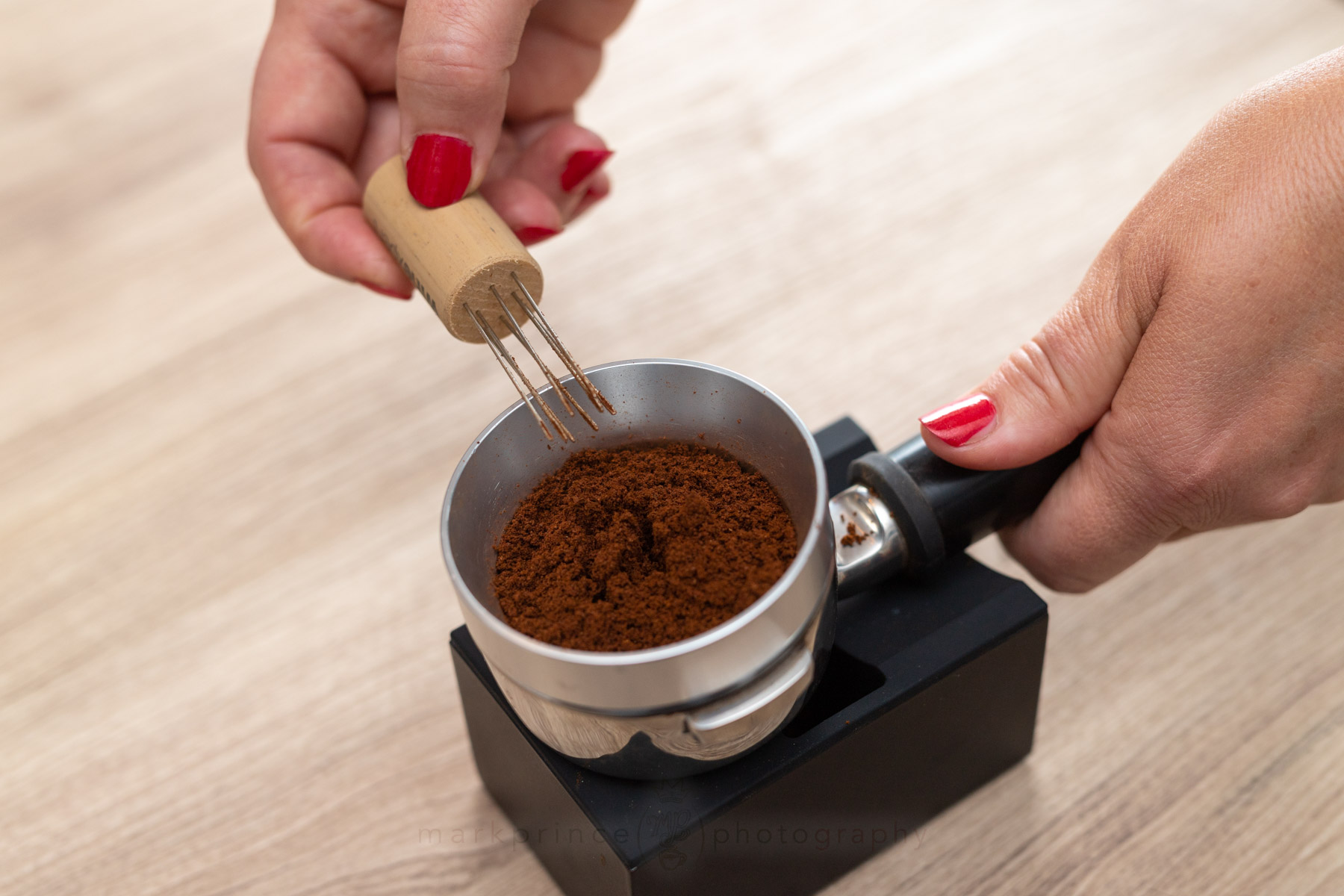
This time around, things moved faster but my homebrew tools were also a bit more rough with the bed of coffee. Nevertheless, the shots looked even better, and the crema production was game on. Gone were the bitter or sour notes that sometimes plagued my previous efforts. Instead, I experienced a dance of flavors, from the sweet, caramel-like undertones to the delightful acidity that danced on my taste buds. The tasting notes on the roaster’s bag were a lot closer to what I was tasting in the cup.
Game on, WDT!!!

Consistency and Precision: The WDT Advantage
What struck me most about experimenting with WDT is its ability to deliver consistent results, shot after shot pull. With each subsequent brew, I found myself consistently achieving a high-quality espresso. Moreover, I noticed that the WDT helped me to identify and rectify potential issues during the brewing process. If the flow of espresso deviated from the norm, it became easier to pinpoint the problem. The WDT acted as a diagnostic tool, leading me to make necessary adjustments in grind size or tamping pressure.
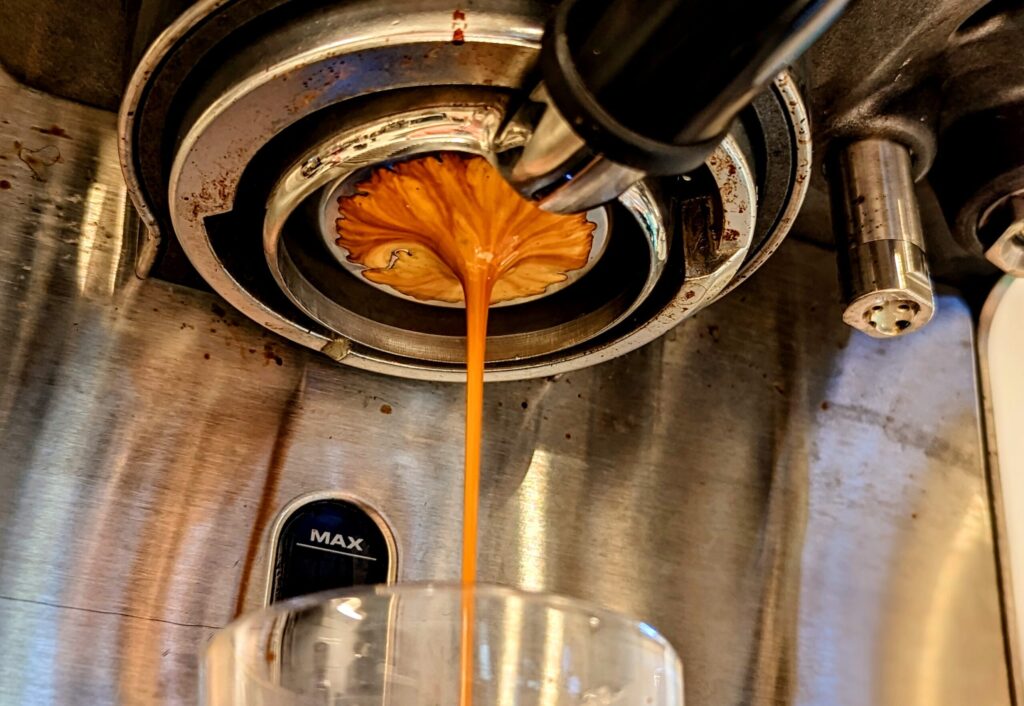
Of course, like any new technique, getting the WDT right requires practice. My initial issues with taking too long were replaced by a less than ideal pattern in my home brew WDT devices. And it seemed like some coffees from different roasters didn’t want to “declump” as well as others. I would watch these WDT demo reels and shorts on Instagram and Youtube and wonder why my own WDT massaged bed of coffee didn’t look like theirs did, before tamping down.
Turns out it was my little home brew WDT devices, which acted more like a shovel at times than a rake for the bed of coffee. My espresso is tasting better, but I clearly need a better WDT tool. Thankfully, our site editor is sending me a new one, from Introvert Makes. Once it arrives, I’ll write up my experience with it.
The WDT is Worth the Effort
In retrospect, adopting the Weiss Distribution Technique has been a pivotal moment in my espresso journey. It has not only elevated the quality of the espresso I create but has also deepened my understanding and appreciation for the complexities of coffee extraction using the espresso method. I can’t believe the cafe I used to work in never used this method!
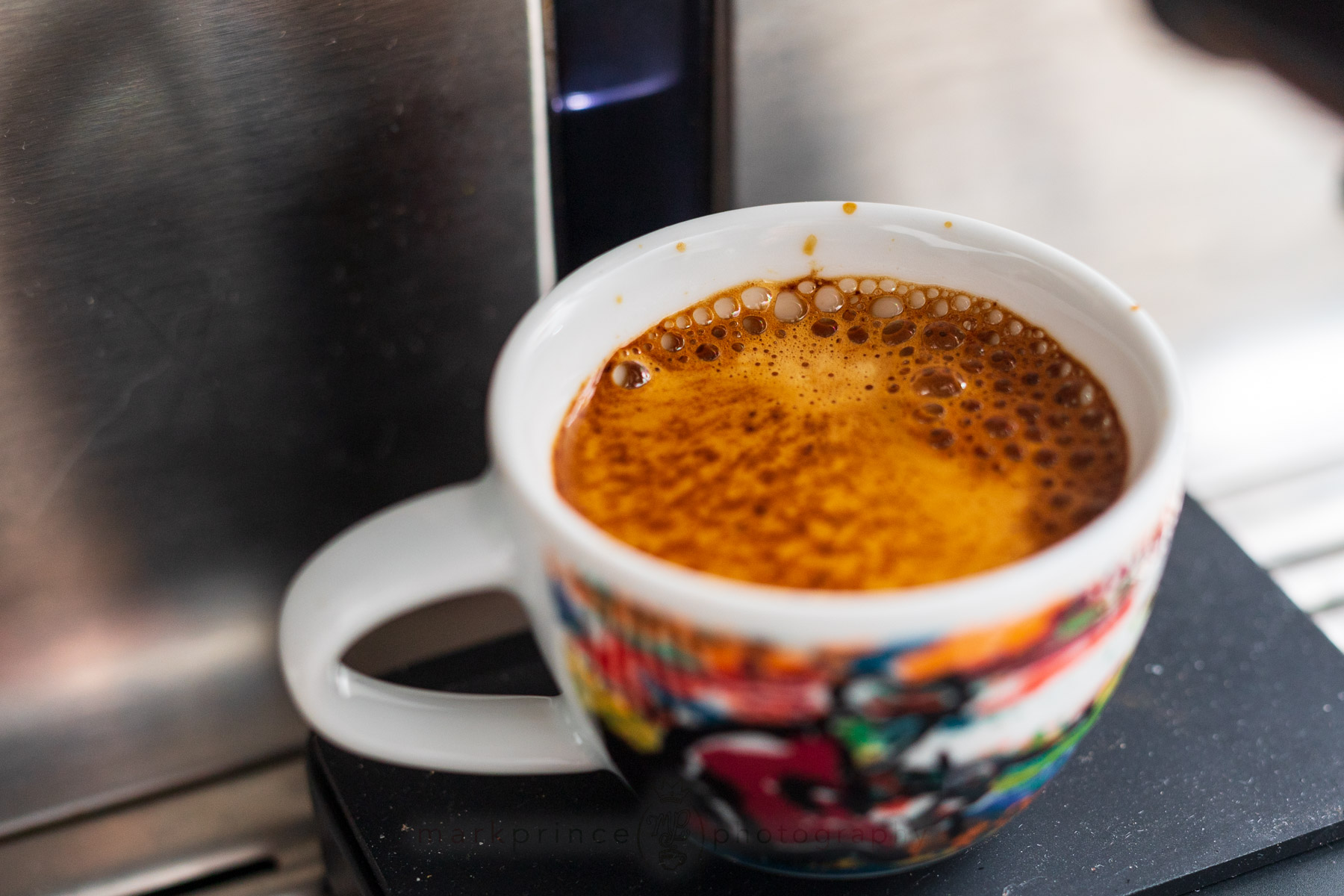
I love coffee. I love the social aspect of it and how, just like music does, coffee sets the tone and stages of our life. The beauty of coffee lies not only in its taste but also in the never-ending pursuit of improvement. The journey of exploring different techniques and experimenting with various variables is what makes this craft so enthralling.
The Weiss Distribution Technique has empowered me to create consistent, exceptional coffee. With a simple paperclip and a willingness to learn, I edge close to more “god shot” moments with espresso. I’m not quite there yet (I still haven’t produced anything as heavenly as the shot David made me), but things are progressing.
The journey of a coffee enthusiast is ever-evolving, and the pursuit of excellence is a never-ending adventure. With each new discovery, I find myself immersed in the intriguing world of specialty coffee, where the possibilities are as vast as the flavor profiles waiting to be unlocked. I’m still new at this WDT thing, but the way it changed my espresso for the better makes me hungry to learn more and get even better at my home barista skills.
As they say, more to come!




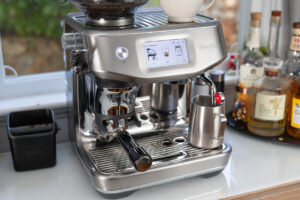
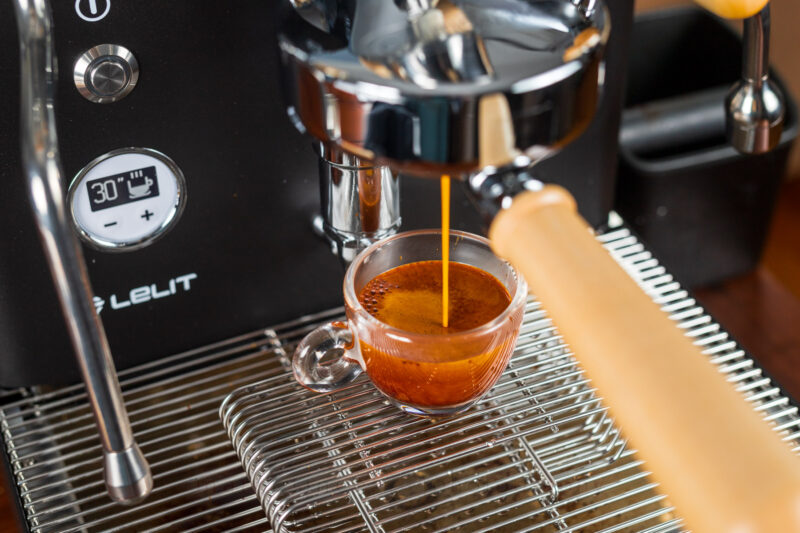



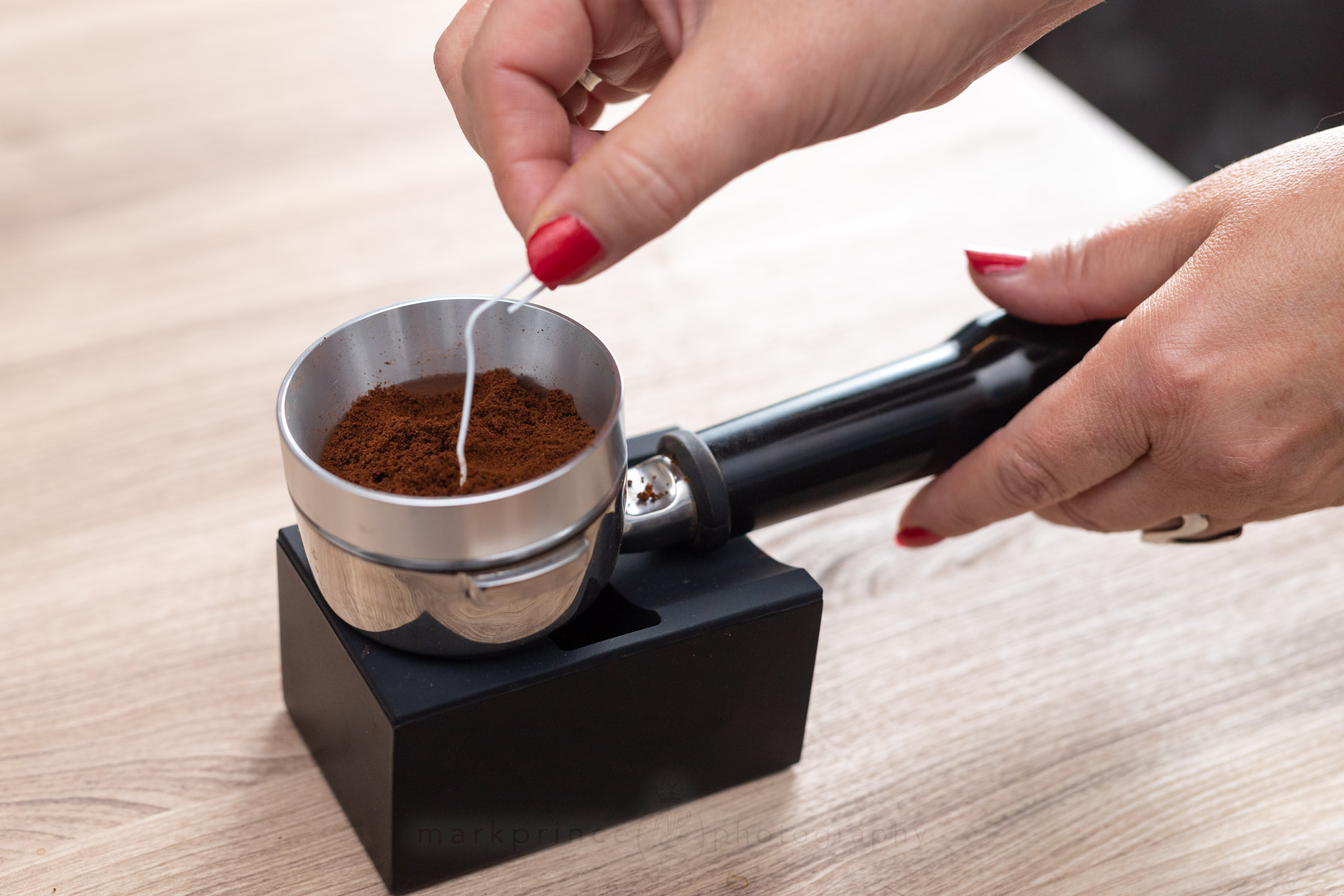











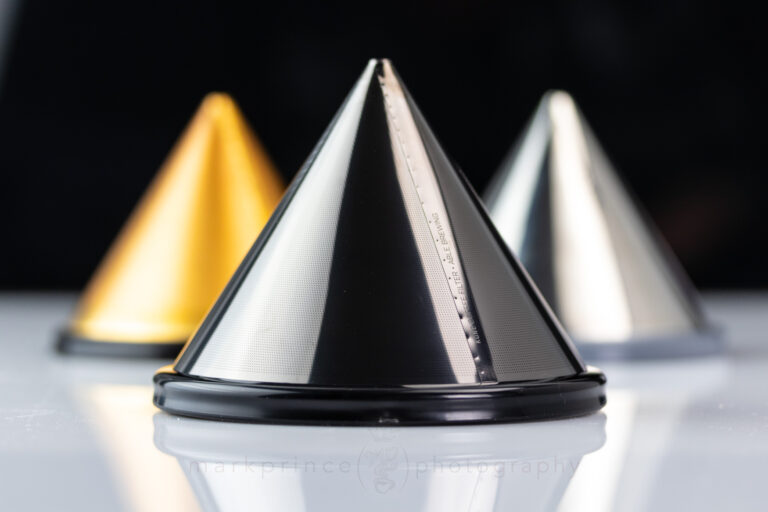


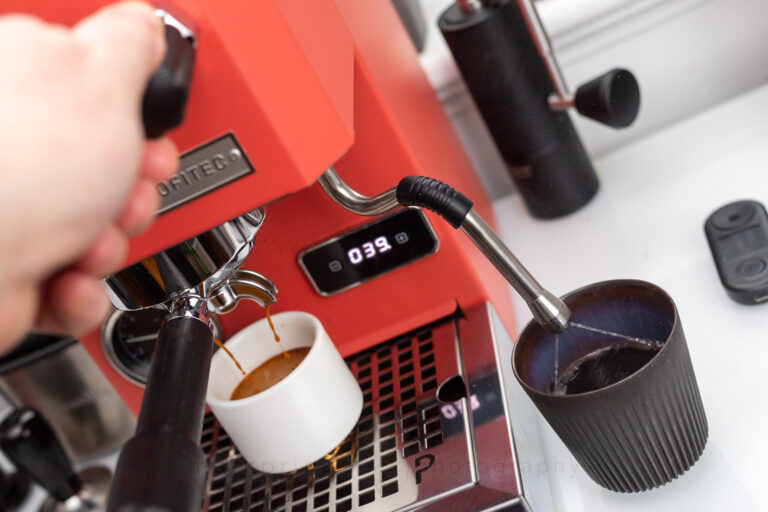
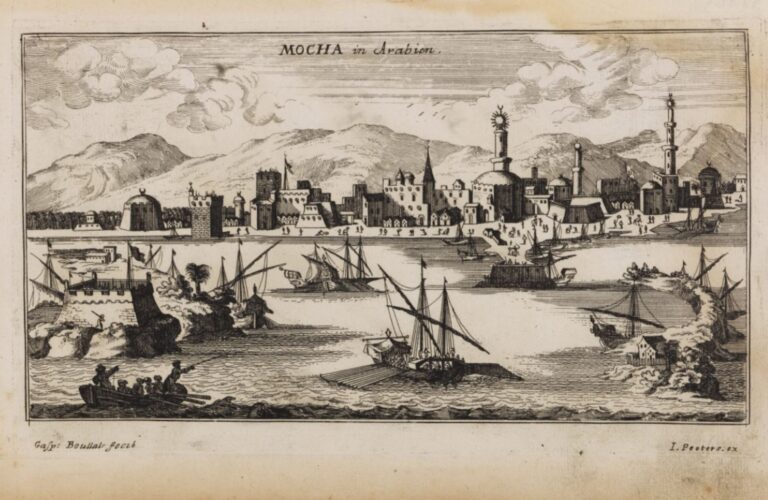








15 Responses
Thank you for this very enthusiastic and informative article! I always thought the WDT thing was somewhat overblown, but after reading your article, I grabbed a humble little paperclip and tried it, and was startled by how much it improved my shot of espresso. Definitely going to explore this technique more!
Thank you very much Simon!
What would change it even more is preforming it with a legitimate WDT tool.
She gets there. She’s currently working on a review for one of the Introvert Makes WDT tools, and she’s noticed another big improvement. Coming soon.
Hello JD, thanks for the comment! You are right, it is even better with a real WDT tool! I am currently using two of them from Introvert Makes, this basic one, and this super fancy one in aluminum and they are so much better than my homebrew versions!
Next step…a spritzer and two quick spritzes to the beans before grinding. I got this from James Hoffman, famous coffee YouTuber, but it’s done wonders for me.
That would be the “Ross Droplet Technique” or RDT, something developed on Home-Barista and CoffeeGeek forums back when the Hoff was a struggling musician 😉 It’s main purpose is to deal with static issues, and works very well.
We used RDT in my cafe because our grinders had some minor static issues. I don’t really need to use it on the Vario grinder. Good tip though!
Nice… gotta look at giving this a shot … would this process work as well for a Moka Pot?
Hi Harvey. The WDT method is used by some folks for pour over coffee, so I can’t see it hurthing for moka pot – give it a try! All you have to lose is an unbent paper clip! 🙂
Very much enjoyed this article. There is no level of coffee nerd-dom that is too far – Especially when the results are borne out!
The reason you will not see baristas using RDT, WDT, puck screens, filter paper in the bottom of baskets, etc., is that those techniques take too much time in a busy cafe. Look for innovative devices in the near future for cafes, though—devices that will automate these techniques in one machine in just a few seconds, as well as tamping the puck.
Btw, BaristaHustle is now shipping out their latest WDT. For $200US! No real reviews yet, but iirc it was used in competition this year by the winning barista.
Yeah, that’s how these crazy expensive devices get some “cred”: give a $200 (or $500, or more, like the Weber one) WDT device to a competing barista to use at a US or WBC, and then pump up the volume about it.
It’s always better to get honest, independent reviews, but it’s also risky AF to send something like a $200 WDT tool to someone who’s actually going to review it, and not just have it as a status symbol to brag about 😉
With all respect, I have a different experience.
First let me explain my technique (such as it is)
I have a good 64 mm grinder with excellent burrs
This grinds straight into a single dose cup
There are no clumps
I put a paper filter in the the basket
Dump in the espresso
Leveler
Tamp
Porta filter screen on top
Brew
So…, given that ther were no clumps out of the grinder
And the tamper turns it into essentially a single giant clump…. I do not see what is left t9 improve with wdt?
First, really appreciate the comment and feedback Ardy.
I have two grinders here that allow me to do the same thing you do: grind straight into a cup or portafilter, and just use either a leveler or nothing at all before tamping down. One’s a $3,000 grinder (Versalab M3), the other is a Sette 270Wi. Their output is fluffy and perfectly centered in the portafilters.
But this article isn’t for a Verslab M3 owner, or a Lagom P64 owner. It’s for probably 98% of home espresso enthusiasts who have a grinder that does output clumpy coffee. Because almost all grinders used for espresso in the home out there output clumpy grinds at the espresso range.
You also mentioned: “the tamper turns it into essentially a single giant clump”… but the catch here is, it’s uniform across the bed of coffee (horizontally – vertical compression is another issue I spent years examining); if you just tamp down on a bed of coffee comprised of clumpy bits and loose bits, what you’re doing is creating these valleys and hills of pressure for water to bypass and screw up extraction, because no matter how hard you tamp, portions of the bed, on a level plane, will be more compressed and more tightly packed than others. WDT helps minimize this and prepare the loose bed of coffee for even compaction by the tamper.